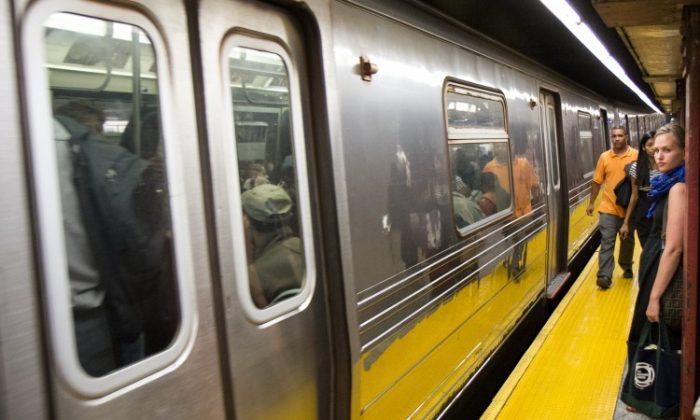NEW YORK—MTA officials fielded questions and concerns from council members on Wednesday prior to budget appropriations. A creative proposal from Council member Peter Koo suggested a letter grade system for subway stations and matching discretionary funds with the MTA to improve cleanliness.
“Let me make a suggestion to MTA,” said Koo. “We rate the restaurants, A, B, C, D, so we should rate all the stations in the MTA system.”
Council member James Vacca, Transportation Committee chair, immediately said that he seconded the idea, and that every station should be rated “on cleanliness, rats, water, garbage, graffiti,” among other things.
Lois Tendler, vice president of government and community relations, pointed out that boroughs and subway lines are already rated for appearance, equipment, and information. The three parameters comprise a key performance indicator, which gets reported to the MTA’s New York City Transit Committee every month.
Council member Domenic M. Recchia Jr., chair of the Finance Committee, which joined the hearing, said afterward that having letter grades would encourage council members to use their discretionary funds to help fix up stations in their jurisdictions.
“The MTA and the council member could get together, and if the cost was $200,000 … the council member could say, we'll put up half of it, and you put up half of it,” Recchia said. He has contributed funds towards improving stations in his Brooklyn district, which includes Coney Island and Brighton Beach.
As City Council has no authority over the MTA, we could pass a resolution about the issue, suggested Vacca.
William Henderson, executive director of the Permanent Citizens Advisory Committee to the MTA, said in a phone interview that letter grades might not make sense since “people generally know what the conditions are in the stations they use.”
“I’m not sure it provides a whole lot of additional information that riders don’t already have by being there,” he said. “In an environment where resources are strained, I’m not sure that’s exactly the path to take.”
Talking about ways to gauge and improve station conditions should continue, though, concluded Henderson. An example is the MTA’s new Fastrack program, which shuts down portions of tracks to give workers unfettered access to perform maintenance. Fastrack saved the MTA an estimated $5 million in productivity in the first quarter of 2012, and will expand outside of Manhattan’s Central Business District in 2013.
Budget Concerns and Fare Increases
Though numerous council members voiced complaints about particular stations, the bigger concerns were related to the coming fare increases and the budget.
Eight to 10 percent increases in ticket prices are slated for January 2013 and January 2015, respectively. The state mandates the raises. Vacca wants the money garnered to restore some of the cut services, while MTA officials said it will go into the general operating fund, for areas such as fuel and pensions.
Vacca also complained about the recent delay over East Side Access, one of the MTA’s mega-projects that’s slated to bring the Long Island Rail Road to a new terminal beneath Grand Central.
“Forget the old adage about a day late and a dollar short, this project is now another year late and another billion dollars short,” he said, adding that he wonders where the money will come from. The extra cost is $800 million over previous estimates, according to MTA documents.
Another concern was mounting debt. Money spent to pay off debt will increase from $2.1 billion in the upcoming fiscal year to $2.6 billion by 2015, according to the MTA. Outstanding debt will be $39 billion by 2015, and no funding is in place for the Capital Plan—which calls for new lines and stations, as well as signal upgrades and other improvements—beyond 2014.
When originally laying out its 2010–2014 Capital Plan, the MTA had a $9.9 billion gap, and has since “devised new ways to fully fund the program,” according to a document given out at the hearing. The MTA earns a little more than half of its expenses from fares, and receives funding from a variety of sources—including federal, state, and city agencies—for the rest of its expenses.
In the fiscal year 2013 budget, currently being fine-tuned, the MTA would receive $886 million from the city, which it would spend on things such as paratransit and free or reduced school fares. An extra $497 million is expected to come from the city matching state aid and as reimbursement for the MTA taking over some private bus lines at the city’s request. The city is expected to contribute about 7 percent of the MTA’s budget.
The Epoch Times publishes in 35 countries and in 19 languages. Subscribe to our e-newsletter.









